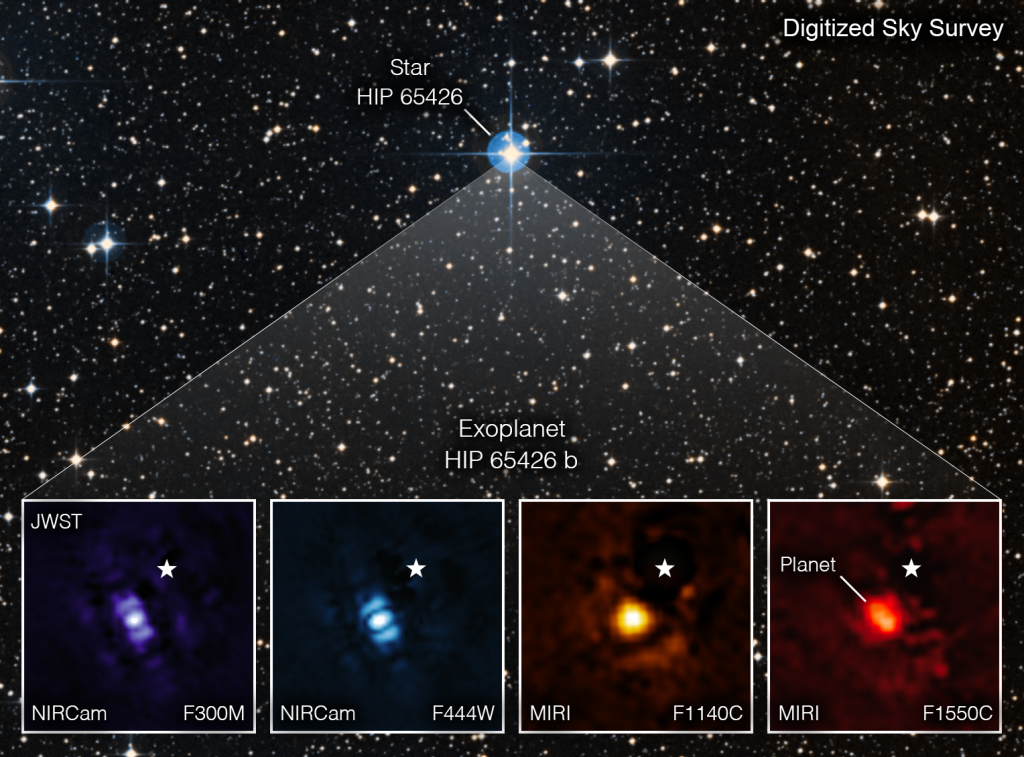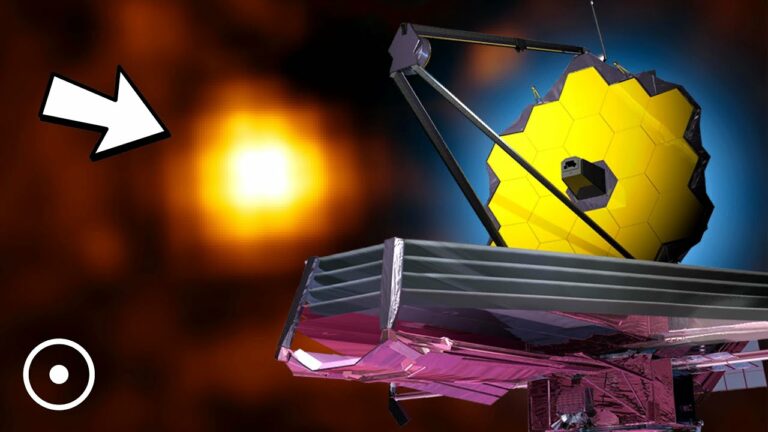NASA’s Webb Takes Its First-Ever Direct Image of Exoplanet
For the first time ever, scientists have used James Webb Space Telescope to take a direct image of an exoplanet, a gas giant, called HIP 65426 b, 385 light-years away from us.
Using NASA’s James Webb Space Telescope, astronomers have captured the first direct image of a planet outside of our solar system. Because the exoplanet is a gas giant and lacks a rocky surface, it is inhospitable to life.
The image, as viewed through four distinct light filters, demonstrates how Webb’s strong infrared vision can readily capture worlds outside of our solar system, paving the door for upcoming observations that will provide more data about exoplanets than has ever been available.

Sasha Hinkley, assistant professor of physics and astronomy at the University of Exeter in the United Kingdom, who oversaw these observations with a sizable multinational cooperation, described it as a “transformative event,” not only for Webb but for astronomy in general. Webb is a multinational mission run by NASA in conjunction with its affiliates, the Canadian Space Agency and the European Space Agency (Canadian Space Agency).
The HIP 65426 b exoplanet in Webb’s picture has a mass that ranges from six to twelve times that of Jupiter, and these findings may assist to further refine that range. In comparison to our 4.5 billion-year-old Earth, it is a youthful planet, being just roughly 15 to 20 million years old.
Short infrared light waves were used to capture photographs of the planet that were taken in 2017 by astronomers using the SPHERE instrument on the Very Large Telescope of the European Southern Observatory in Chile. The inherent infrared light of Earth’s atmosphere prevents ground-based telescopes from picking up additional features, which Webb’s perspective at longer infrared wavelengths exposes.
The information gathered from these observations has been analyzed by researchers, who are now writing a report that will be submitted to journals for peer review. In contrast, future opportunities for researching far-off planets are already hinted at by Webb’s initial exoplanet capture.
HIP 65426 b is sufficiently enough away from its host star for Webb to be able to distinguish the planet from the star in the image since it is 100 times further away from its host star than Earth is from the Sun.
Webb can directly observe certain exoplanets like this one since its near-infrared camera (NIRCam) and mid-infrared instrument (MIRI) are both fitted with coronagraphs, which are little masks that block out starlight. This decade’s end will see the launch of NASA’s Nancy Grace Roman Space Telescope, which will showcase an even more sophisticated coronagraph.
The efficiency with which the Webb coronagraphs suppressed the host star’s brightness was “very astounding,” according to Hinkley.
Because stars are so much brighter than planets, it is difficult to take direct photographs of exoplanets. In the mid-infrared and near-infrared spectrums, the planet HIP 65426 b is a few thousand times fainter than its host star.
The planet appears as a slightly different shaped blob of light in each filter picture. This is due to how Webb’s optical system specifically converts light via the various optics.
Aarynn Carter, a postdoctoral researcher at the University of California, Santa Cruz, who oversaw the photos’ processing, said getting this image “was like mining for cosmic gold.” With careful picture processing, I was able to exclude the star’s light and reveal the planet. “At first all I could see was light from the star,” the author writes.
HIP 65426 b marks the way forward for Webb’s exoplanet exploration even though this is not the first direct image of an exoplanet to be acquired from space — the Hubble Space Telescope has already captured direct planetary photographs.
The fact that we’ve only just began, in my opinion, is what’s most thrilling, added Carter. There will be a ton more photos of exoplanets that will influence how we see their physics, chemistry, and creation in general. We might even find some undiscovered worlds.
Source:NASA
Do not forget to share your opinion with us to provide you with the best posts !




0 Comments